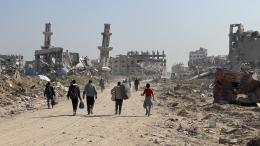This research paper on non-military aspects of Protection of Civilians (PoC) was prepared to inform the work of the UN Secretary-General’s High-level Independent Panel on Peace Operations. Non-military aspects of PoC deserve attention for three reasons: First, it is now well understood that PoC is not just a task for soldiers. The Security Council regularly includes references to non-military tasks in PoC mandates. And the UN department for Peacekeeping Operations (DPKO) defines PoC as a “whole-of-mission” concept with key roles for both military and civilian components along all three tiers of action: (1) protection through dialogue and engagement; (2) provision of physical protection; and (3) establishment of a protective environment.
Second, civilian missions (and mission components) have shown they can provide crucial protection functions. In this respect, it is worthwhile to explore the degree to which PoC lessons may be applicable to Special Political Missions (SPMs). According to some, “there was no reason why SPMs should not have specific PoC mandates, too.” And third, the notorious reluctance of peacekeepers to use force in the pursuit of PoC mandates warrants a closer look at what non-military tools missions have at their disposal.
The research for this paper was conducted as a desk-based review of relevant academic and think tank literature, media reports, and public and internal UN documents, complemented by a handful of informal interviews with mid-level UN staff. This paper adopts a narrow interpretation of PoC, looking primarily at tools and activities that provide more immediate protection from specific and imminent threats, including local conflict resolution and peacemaking efforts, human rights monitoring and advocacy, engagement with armed groups, and creating security conditions conducive to provision of humanitarian assistance. By contrast, this paper does not cover more “upstream” aspects of PoC that are difficult to distinguish from structural conflict prevention efforts such capacity building in the areas of rule of law or security sector reform (SSR).
Access Non-Military Protection of Civilians in UN Peace Operations: Experiences and Lessons here.


